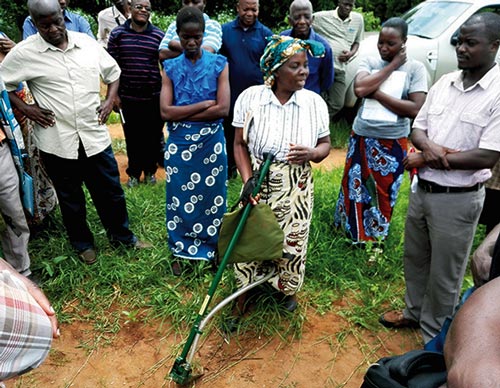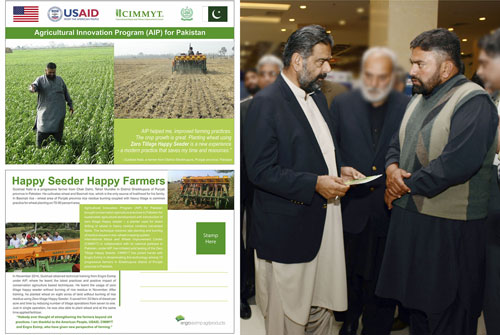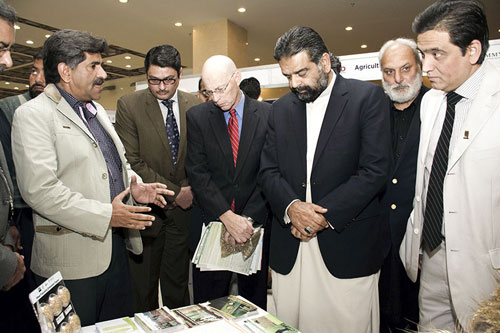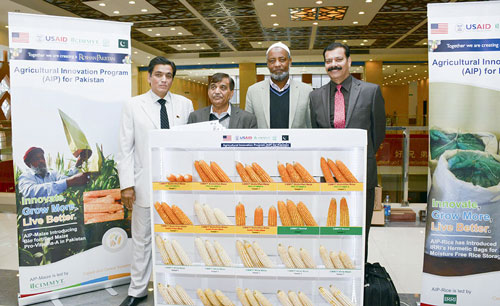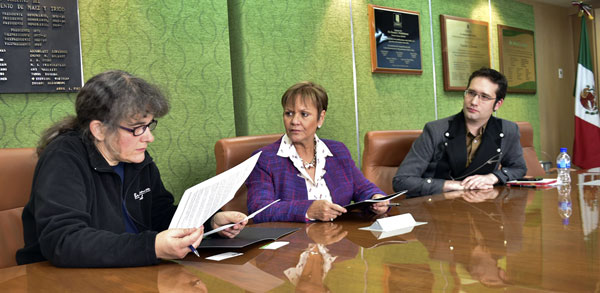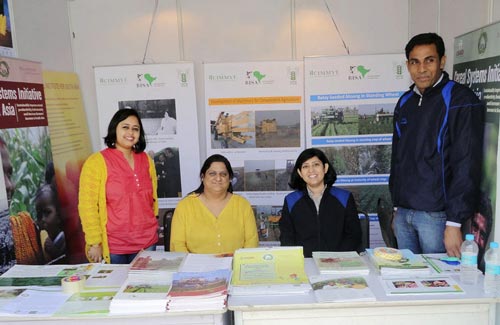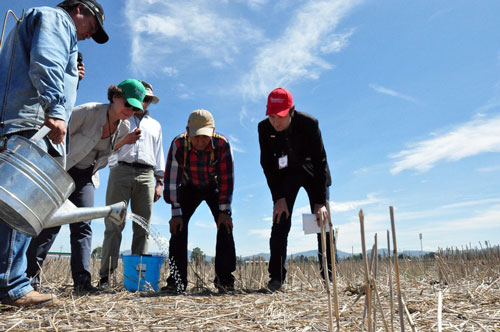Race for Food Security by 2050 Can be Won, Mexico Agriculture Secretary Says
EL BATÁN, Mexico (CIMMYT) – Mexico will need to more than double food production by 2050 to feed its growing population, the country’s agriculture secretary said on Thursday, citing statistics that project it will grow 22 percent to an estimated 150 million people.
Investing in research to improve small-farm technology and boost sustainable development in collaboration with such organizations as the International Maize and Wheat Improvement Center (CIMMYT), which runs Mexico’s Sustainable Modernization of Traditional Agriculture (MasAgro) program, is key to increasing food supplies, said Enrique Martínez y Martínez, head of the Ministry of Agriculture, Livestock, Rural Development, Fisheries and Food (SAGARPA).
“Those eating once a day will eat three times a day,” he said, adding that Mexico, with a current population of 122 million people, will produce 70 to 80 percent more food by 2050.”
In Mexico, 80 percent of farmers have less than 5 hectares (12 acres) of land and farm on hilly, difficult terrain, which means tractors and farm machinery are often too big and cumbersome to function properly, reducing the potential for profits and productivity, Martínez y Martínez said.
The country’s president, Enrique Peña Nieto, has made research a priority and aims to increase national investment in research to 1 percent of GDP, Martínez y Martínez added. Mexico’s GDP was $1.26 trillion in 2013, according to the World Bank. By that measure, Mexico ranks as the world’s 15th biggest economy.
What we need to do is to make sure financial resources reach CIMMYT and INIFAP, Martínez y Martínez said, referring to Mexico’s research institute for agriculture, livestock and forests.
The agriculture secretary was at CIMMYT headquarters near Mexico City to celebrate the unveiling of a statue of scientist Norman Borlaug and to preside over the annual renewal of the MasAgro agreement. MasAgro helps farmers implement techniques favoring minimal soil disturbance, permanent soil cover and crop rotation to sustainably boost yields and increase profits.
Nobel Peace Prize laureate Borlaug, who died in 2009 at age 95, led efforts that began in Mexico to develop high-yielding, disease-resistant, semi-dwarf wheat varieties in the mid-20th century that are estimated to have helped save more than 1 billion lives in Pakistan, India and other parts of the developing world.
CLEAR GOALS
Despite surpluses of maize in the states of Sinaloa and Guerrero, — the latter produced 2 million tons of white-grain maize, Mexico’s main food staple in 2014 — the country is importing between 7- to 10-million tons of yellow maize a year, Martínez y Martínez said.
“We need to be self-sufficient and I’m completely convinced that we can be, but we have to find the right mechanisms. We’re self-sufficient by far and have a surplus of white maize, but we’re at a deficit in yellow maize,” he said.
In Mexico, where maize originated, the white variety is important to the human diet, while the yellow variety is used primarily to feed livestock.
“Together with SAGARPA we’ve made a great impact, but we mustn’t forget that the job is not yet done,” said Thomas Lumpkin, CIMMYT’s outgoing director general, noting that almost 23 percent of Mexicans, some 27.4 million people, still suffer from food shortages and insecurity.
“When you visit farmers in the state of Chiapas – farmers on the hillsides – there are no young people because they left when they grew up, they couldn’t make enough money,” he said. We’ve got to be able to improve incomes, to keep that work alive is the key.
“It’s clear that the agriculture secretary is committed to sustainable agriculture and agricultural research,” said Bram Govaerts, associate director of CIMMYT’s Global Conservation Agriculture Program who played a key role in the development of MasAgro.
“We need to continue innovative research, but it must be connected with farmer needs and integrated with the value chain,” said Govaerts, winner of the 2014 Borlaug Field Award from the World Food Prize Foundation, who spoke at the unveiling ceremony.
“We need to develop a platform that can generate public-private investment, where companies can reinvest in farmers and agricultural research once they reap the benefits. Smallholder farmers can provide big companies with grains produced under sustainable practices to meet their sustainability indicators.”
LIVING LEGACY
The World Food Prize was created by Borlaug to recognize people who have advanced human development by improving the quality, quantity or availability of food in the world. Almost 30 years later in 2014, the prize was awarded to Sanjaya Rajaram, his former student, a wheat breeder for many years at CIMMYT, who released more than 480 varieties of bread wheat sown on more than 58 million hectares in 51 countries.
“It’s a feat unlikely to ever be surpassed by another wheat breeder,” said John Snape, chair of CIMMYT’s board of trustees.
Rajaram was honored with a miniature replica statue of the Borlaug life-size sculpture at the unveiling, which attracted government officials, diplomats and members of the international agricultural community.
The bronze sculpture, which depicts Borlaug taking field notes, is based on an emblematic photograph, said artist Katharine McDevitt, who teaches sculpture at the Chapingo Autonomous University of agriculture in the city of Texcoco near CIMMYT.
McDevitt began her artistic career in New Hampshire, but has lived in Mexico for almost 40 years.
“While I’ve done a lot of portrait sculpture, this is the most inspiring figure I’ve ever had the privilege of doing,” McDevitt said. “This project has been the greatest honor of my career.”
Borlaug’s daughter, Jeanie Borlaug Laube, unveiled the sculpture.
“My dad was competitive, determined and aware of the need for teamwork,” she said.
“He was a man with a message and he took it to the farmer like no other person in history, before or since. With your help he saved a billion lives, and now it falls on all of you to sustain that salvation.”
MEDIA CONTACTS:
Julie Mollins
Wheat Communications Officer
Global Wheat Program
International Maize and Wheat Improvement Center (CIMMYT)
j.mollins@cgiar.org
Ricardo Curiel
Gerente de Comunicación en México
Centro Internacional de Mejoramiento de Maíz y Trigo (CIMMYT)
r.curiel@cgiar.org
ABOUT CIMMYT
The International Maize and Wheat Improvement Center (CIMMYT), headquartered in El Batán, Mexico, is the global leader in research for development in wheat and maize and wheat- and maize-based farming systems. CIMMYT works throughout the developing world with hundreds of partners to sustainably increase the productivity of maize and wheat systems to improve food security and livelihoods.
CIMMYT is a member of the 15-member CGIAR Consortium and leads the Consortium Research Programs on Wheat and Maize. CIMMYT receives support from national governments, foundations, development banks and other public and private agencies.
CIMMYT wheat research: http://staging.cimmyt.org/en/what-we-do/wheat-research
CGIAR: http://www.cgiar.org
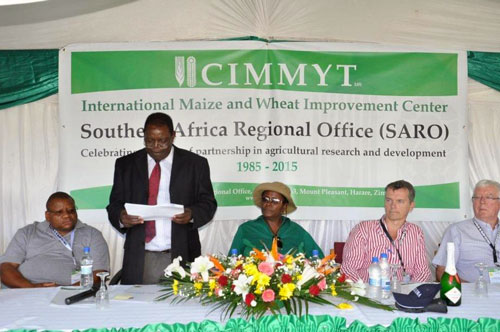
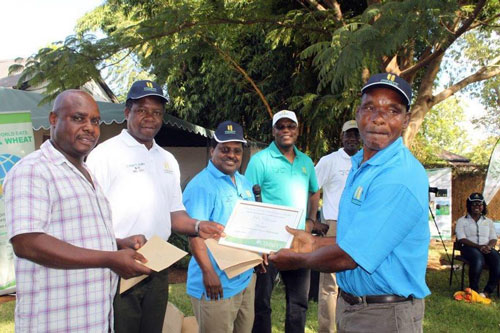
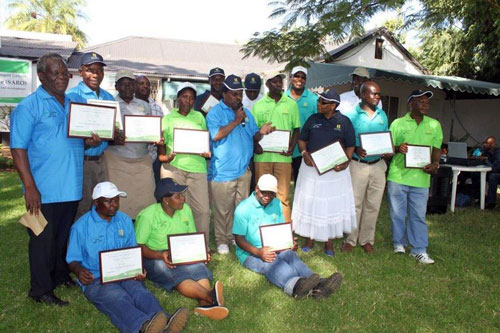

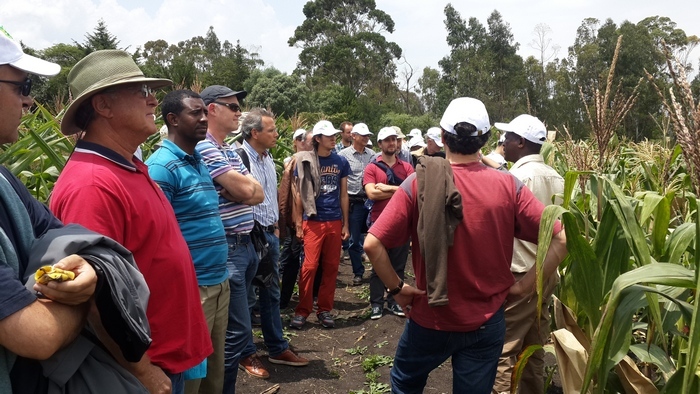
 Poor pickings that will lead to a paltry harvest: a maize cob from a crop hard-hit by drought.
Poor pickings that will lead to a paltry harvest: a maize cob from a crop hard-hit by drought. Participants at the DTMASS project launch in Uganda, 4th February 2015. Photo: CIMMYT
Participants at the DTMASS project launch in Uganda, 4th February 2015. Photo: CIMMYT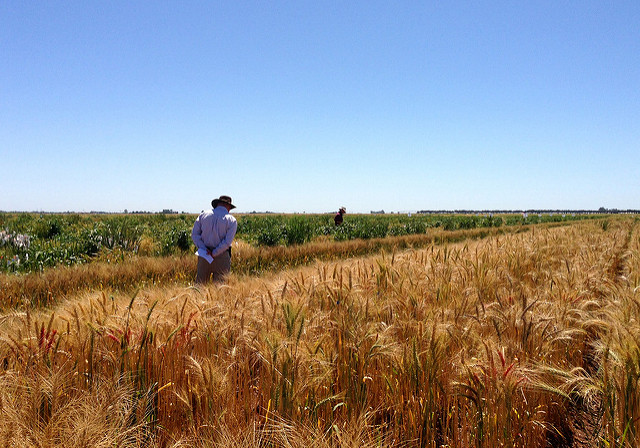
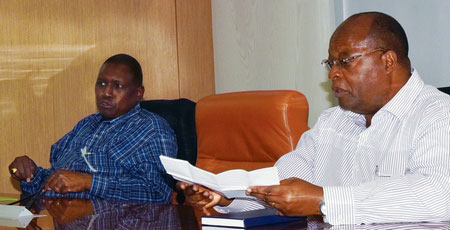
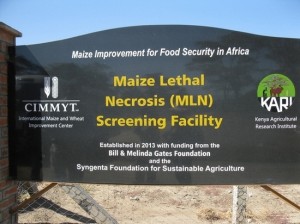

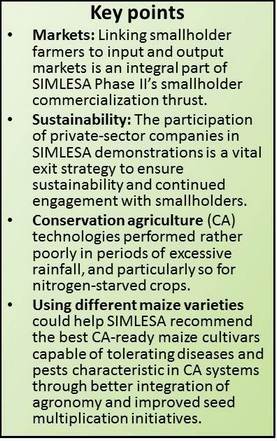 In Malawi, the field visits began at Kasungu District, with 16 farmers and technical staff from Mozambique who were on an exchange visit also participating. The group visited outscaling initiatives by the National Association of Smallholder Farmers of Malawi (NASFAM), in which maize–groundnut rotations and maize–pigeonpea systems are being implemented through lead farmers. More than 120 households per field learning site are participating in the demonstrations on each of the five NASFAM sites visited.
In Malawi, the field visits began at Kasungu District, with 16 farmers and technical staff from Mozambique who were on an exchange visit also participating. The group visited outscaling initiatives by the National Association of Smallholder Farmers of Malawi (NASFAM), in which maize–groundnut rotations and maize–pigeonpea systems are being implemented through lead farmers. More than 120 households per field learning site are participating in the demonstrations on each of the five NASFAM sites visited.